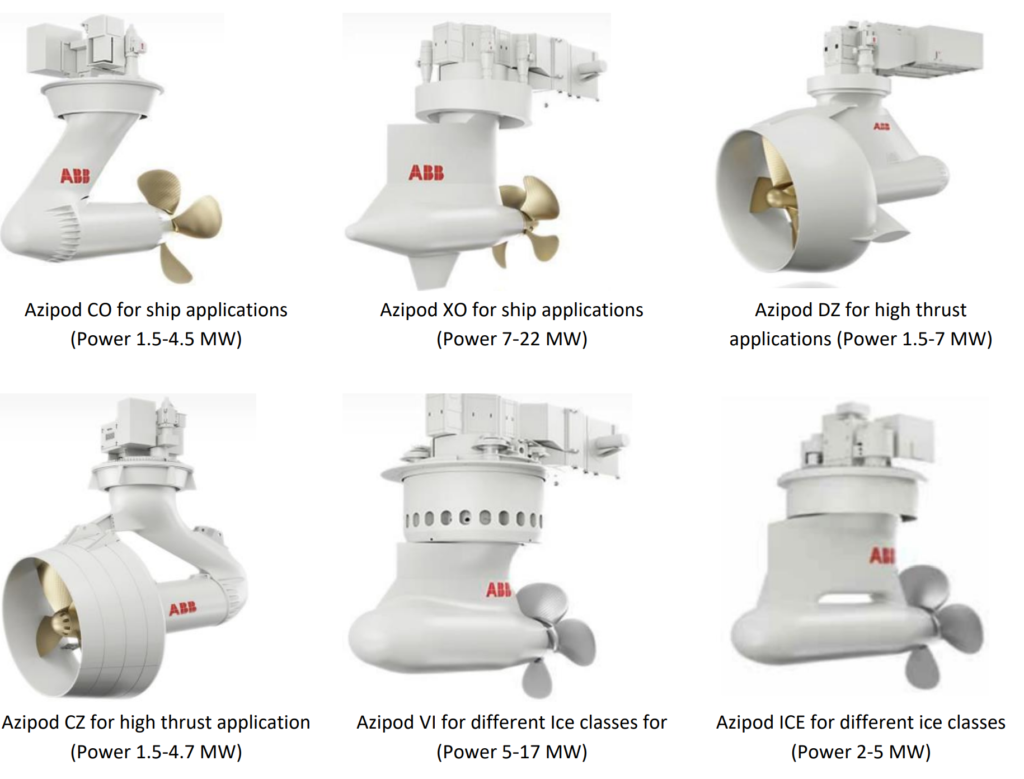An Azimuth Thruster, also known as an azimuth thruster or azimuthing thruster, is a propulsion device used primarily in marine vessels to provide thrust in any direction around the vessel’s axis. Unlike traditional propellers, which are fixed in place and provide propulsion primarily in a forward direction, azimuth thrusters are mounted on pods that can rotate horizontally, allowing them to direct thrust in any desired direction.

Azimuth Thruster Working Principle
The working principle of an azimuth thruster involves generating thrust in any direction around the ship’s axis. This allows for precise maneuverability and control, particularly in tight spaces or when navigating in challenging conditions.
Azimuth thrusters, also known as pods, are propulsion systems capable of rotating a full 360 degrees, allowing for exceptional maneuverability of ships. There are two main types: mechanical transmission thrusters and electrical transmission pods.
Mechanical transmission thrusters utilize a motor inside the ship to drive the outboard unit through gearing. They can be either L-drive or Z-drive configurations. L-drive thrusters have a vertical input shaft and a horizontal output shaft with a single right-angle gear, while Z-drive thrusters have a horizontal input shaft, a vertical shaft in the rotating column, and a horizontal output shaft with two right-angle gears.
On the other hand, electrical transmission pods have an electric motor integrated directly into the pod itself, eliminating the need for gears. The electricity to power these motors is typically generated onboard by a diesel or gas turbine engine.
While electrical transmission pods offer advantages such as good hydrodynamic performance, low vibrations, and ergonomic design due to their integrated transmission system, they tend to be more expensive and less efficient compared to traditional mechanical transmission systems. As a result, they are commonly found on ships that require high maneuverability, such as passenger ships, ice-going vessels, and supply ships.
Azimuth Thruster Components
The main components of an azimuth thruster include a propeller, a motor or engine to drive the propeller, and a pod or housing that allows for horizontal rotation. By rotating the pod, the direction of thrust can be changed, providing greater maneuverability and control over the vessel’s movement. This makes azimuth thrusters particularly useful in situations where precise maneuvering or station-keeping is required, such as docking, dynamic positioning, or navigating in confined spaces.
Azimuth thrusters come in various configurations, including fixed-pitch and controllable-pitch propellers, and can be powered by electric motors, diesel engines, or hydraulic systems. They are commonly found in a wide range of vessels, including ferries, offshore supply vessels, tugboats, and cruise ships, where their versatility and maneuverability are highly valued.